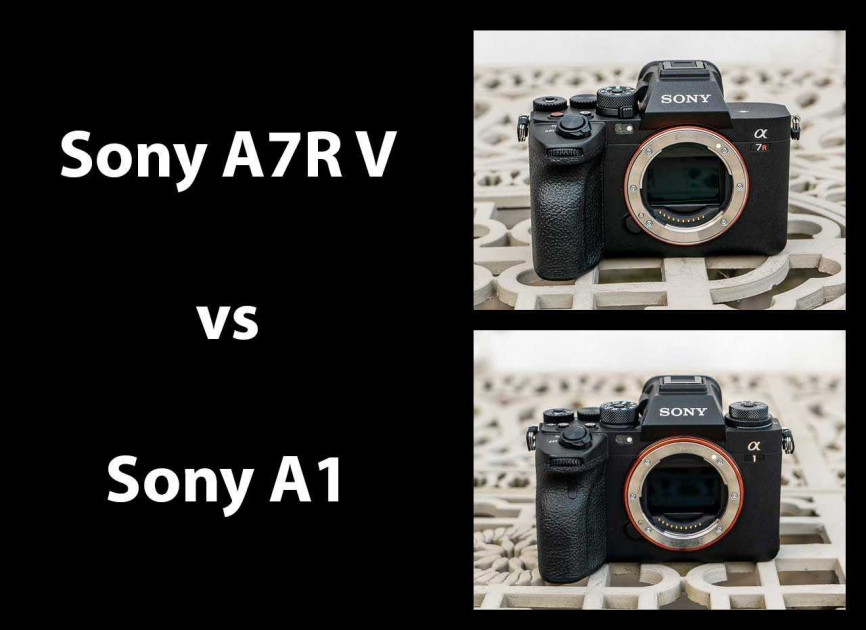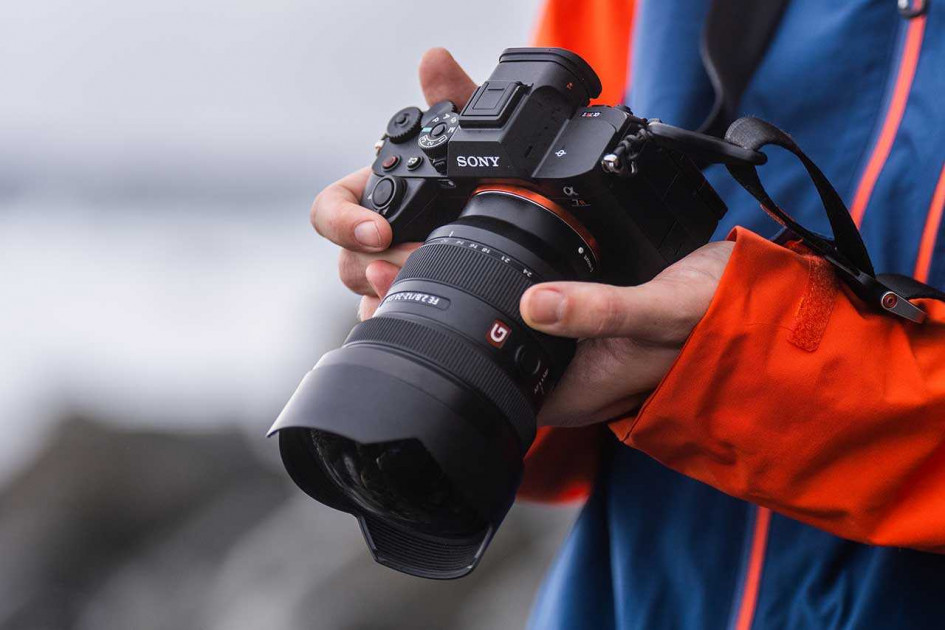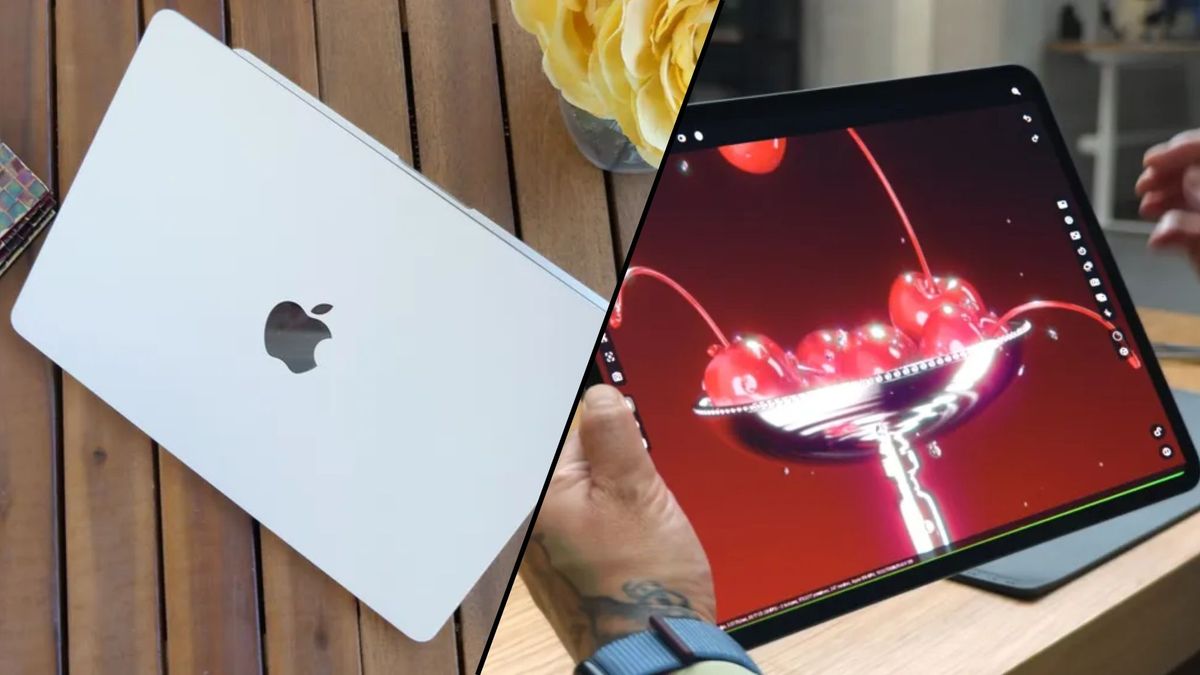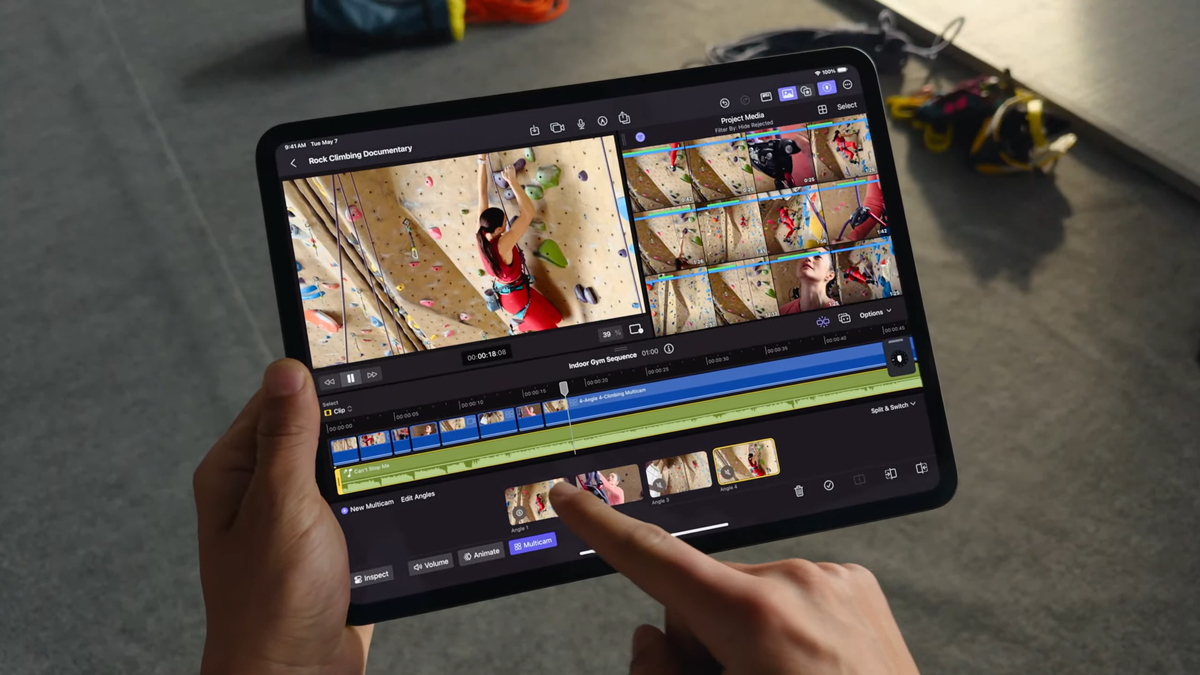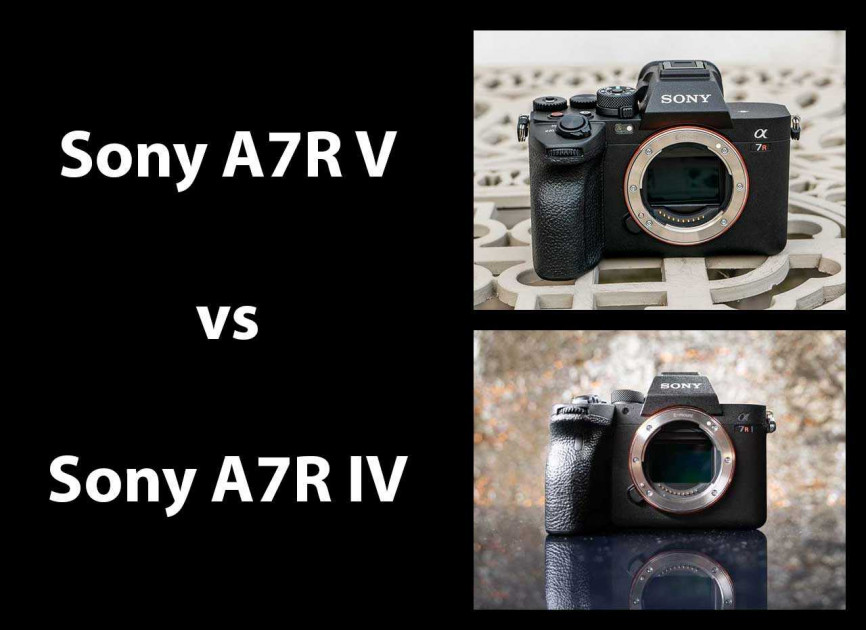

Three years is a long time in the world of digital cameras, especially the mirrorless market, so what exactly has changed since 2019 with the release of the A7R V, and is the older model still worth considering?
We’re bringing you this in-depth head-to-head comparison between the new Sony A7R V and its predecessor the A7R IV to find out what changes and improvements have been made to the 2022 version.
You can also read our detailed Sony A7R IV review to find out exactly what we think of that camera.
Sensor
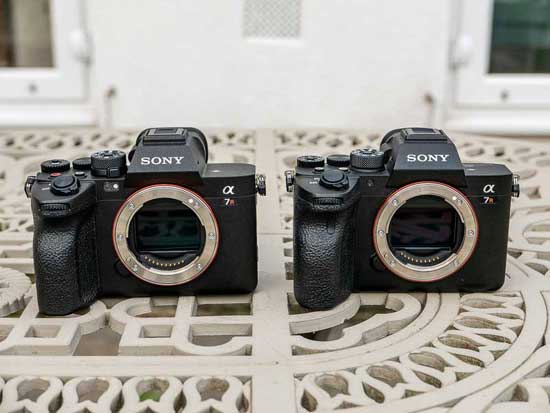
Both cameras have exactly the same 61 megapixel, 35mm full-frame, back-side illuminated (BSI) CMOS Exmor R sensor.
The A7R does have the very latest BIONZ XR processor as also featured in the Alpha 1, though, which as well as offering 8x more processing power than the A7R IV also promises to “improve the basic image quality”, at least according to Sony.
ISO Speed
The native sensitivity range of the Sony A7R V and the A7R IV is identical – ISO 100-32,000, which can be expanded down to ISO 50 and up to ISO 102,400.
Pixel Shift Multi Shooting
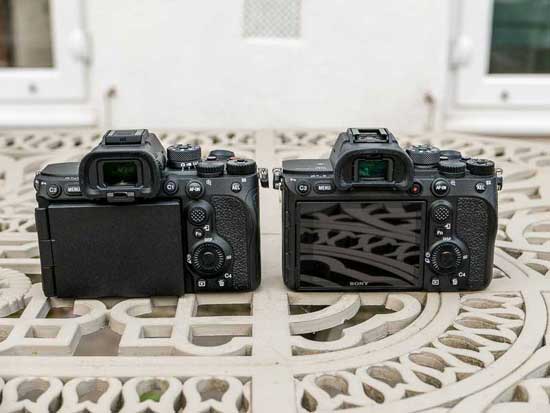
Both cameras have a special multi-shot shooting mode in which they take 16 different images that can then be combined using the Imaging Edge Desktop software to produce a single, 241-megapixel image.
There is one very important different between them – on the A7R IV, this mode only works for non-moving subjects.
On the new A7R V, a new version of the Imaging Edge Desktop that will be released at the same time as this new model can automatically detect and correct small movements in the 16 images, such as leaves in trees or people.
This should greatly expand where and when you can deploy the Pixel Shift Multi Shooting mode.
Note that owners of the Alpha 1 can also benefit from this key improvement when the new software app is released.
Multi Resolution

The A7R V inherits the Lossless Compressed RAW format that was recently introduced on the flagship A1, which reduces the file size by 50-80%.
A brand new feature is the ability to choose 26 megapixel / Medium or 15 megapixel / Small versions of both RAW and JEPG/HEIF files.
Even better is the new ability to switch from 60 megapixel full-frame to 26 megapixel APS-C stills when shooting Lossless Compressed RAW or JEPG/HEIF, enabling you to instantly “zoom in” on your subject at the push of one customisable button without the need to change either focal lengths or lenses.
Video
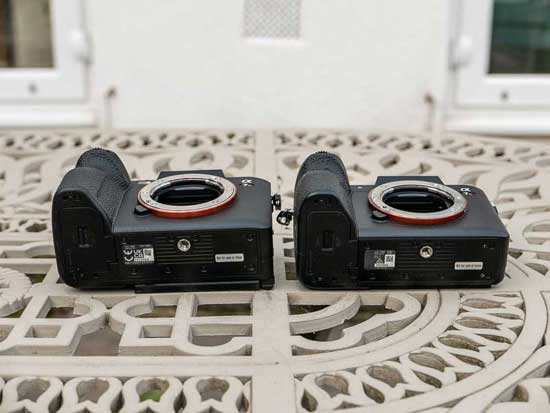
The Alpha A7R V is a much better video camera than the previous model, offering a large number of significant upgrades that position it closer to the flagship A1.
The A7RV can record 8K/25p and 4K/60p with a modest 1.2x crop in 10bit 4:2:2 quality. It also offers 4K/30/25/24p and 1080/120p recording with no crop.
In contrast, the previous A7RIV model can only record 4K/30p with no crop in 8bit 4:2:0 quality. It doesn’t offer either 8K or 4K/60p recording.
Other new video features supported by the A7R V include 16 bit RAW output, S-Cinetone profile, breathing compensation, focus map, and Active+ stabilisation.
Autofocus
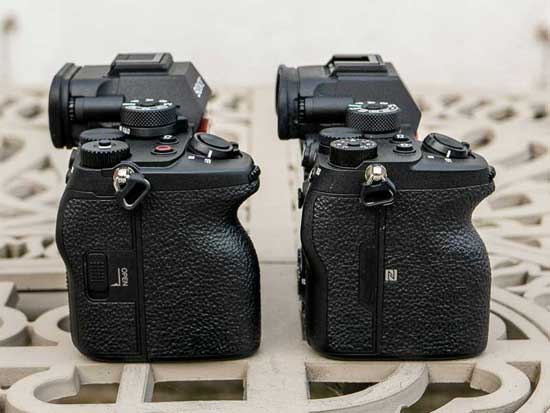
The A7R IV has 567 on-sensor phase-detection AF points covering 74% of the image frame, whereas the new A7R V has 693 on-sensor phase-detection AF points covering 79% of the image frame.
The A7R V also has another slight edge as it can focus down to EV-4 as opposed to the A7R IV’s EV-3.
By far the biggest difference between the two models in terms of their auto-focusing performance is subject recognition.
This is because Sony has added an AI deep learning processing unit to the newer camera which enables it to recognise far more subjects than the previous model, and also greatly improves the detection of humans and animals/birds.
The A7R IV can only recognise the eye and face of a human, and the eye of an animal.
For the first time on any Sony camera. the A7R V can recognise a human via its pose as well as its eye and face. So if the person’s head is turned away from the camera, the A7 R V will still accurately detect the subject as human based on its AI deep learning.
Animal and bird detection has been expanded from just being able to recognise the eye on the Mark IV to the eye, head and body on the Mark V.
New to the A7RV is the ability to recognise airplanes, cars, trains and insects, all things which even the flagship Alpha 1 can’t currently detect (running version 1.30 firmware).
Burst Shooting
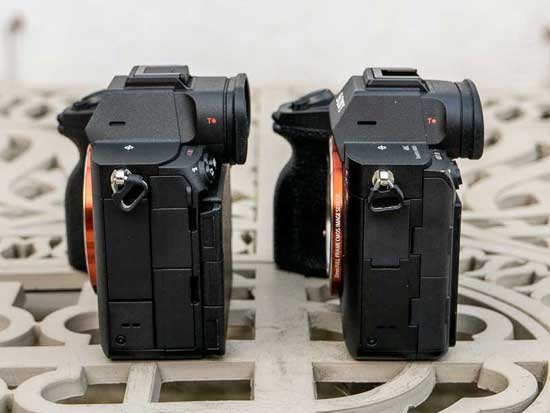
The burst shooting rate of the new model is exactly the same as the old one – 10fps with either the mechanical or electronic shutter – but the buffer size has been greatly increased.
Whereas the A7R IV could only shoot 10fps bursts up to for 68 JPEG and 68 compressed RAW images before the recording rate slowed down, the new A7R V can record up to 88 uncompressed RAW, 184 compressed RAW+ JPEG, 583 compressed RAW, or 1000+ JPEGs, which is pretty impressive for a 61 megapixel camera!
Body and Design
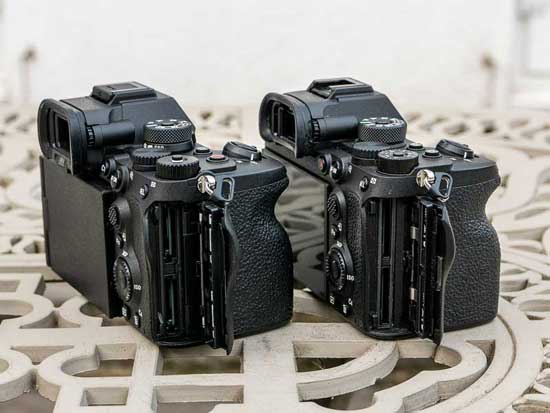
If you were hoping that the Sony A7R V would radically deviate from the tried and trusted Alpha blueprint, then you’ll be sorely disappointed, as it’s virtually identical to its predecessor.
The one-touch movie record button has been moved from the rear of the camera to the top-plate, swapping positions with the C1 button and also made larger in the process.
The new exposure compensation dial is unmarked rather than displaying the +-3EV values as on the A7R IV, reflecting the fact that it can now be customised on the new model.
There is now a handy Still / Movie / S&Q dial located under the shooting mode dial. with the camera remembering the menu settings for each mode.
The A7R V is slightly thicker than its predecessor because of its clever new 4-axis LCD screen (more on that below).
The memory card slot now has a lockable switch to help make it more secure.
The A7R V has a newly developed heat-dissipating structure that prevents overheating during video recording and burst shooting.
The camera’s shutter mechanism is closed and protected by a cover when the it is powered off.
There’s also a new anti-dust system and the A7R V offers 500,000 frame shutter life.
IBIS
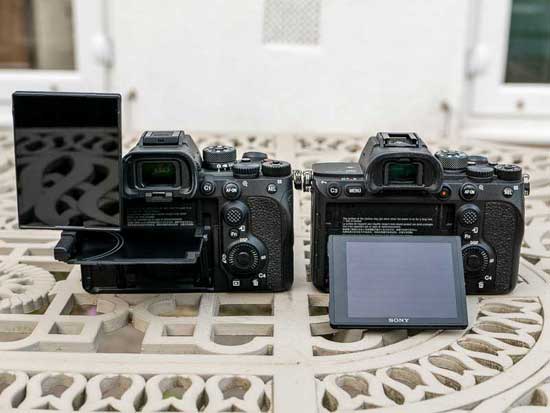
The release of A7R V marks a big step forward for IBIS in Sony Alpha cameras.
Most previous models, including the A7R IV, have exactly the same 5-axis optical in-body image stabilization system which provides up to 5.5-stops of compensation.
This has been one of the few areas where Sony lags behind some of it main rivals, with some offering up to 8 stops of compensation when used with certain lenses.
Now Sony has joined the party with the launch of the A7R V, which thanks to a newly redesigned stabilisation unit now offers up to 8 stops of in-body stabilisation, making it the most capable Alpha camera in this regard.
The A7R V also benefits from having a special Active Mode that increases stabilization for hand-held movie shooting by using the BIONZ XR processors.
Viewfinder
The new Alpha A7R V has exactly the same viewfinder as the A7S III – a 9.44M-dot OLED Quad-XGA electronic viewfinder with 0.90x magnification and a refresh rate of up to 120fps.
The A7R IV has a still very impressive 5.76M-dot OLED electronic viewfinder with 0.78x magnification and a 120fps refresh rate.
LCD Screen
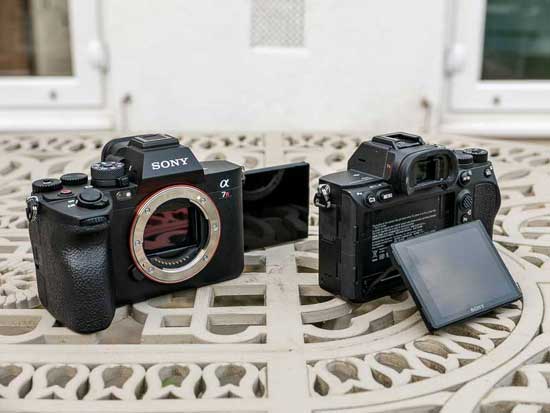
One of the biggest upgrades on the A7R V is its staggeringly good LCD screen.
It has a 3.2-inch, 2095K dot resolution screen compared to the A7R IV’s 3.0-inch LCD screen with 1440K dots of resolution.
The biggest change is the new screen’s sheer versatility.
The screen on the A7R IV could only be tilted up by 107 degrees and down by 41 degrees, whereas the A7R V has an incredible new 4-axis multi-angle screen that can be flipped out to the side, rotated to the front, folded against the back of the camera to help protect it, and set to many other positions in-between.
In terms of touch-screen functionality, the new Alpha A7R V thankfully follows in the footsteps of the A7S III and A1, inheriting the same menu structure and upgraded touch control, rather than the crippled touchscreen and more complex menu system of earlier Alpha models, which included the A7R IV.
Memory Cards
As you would expect from a modern professional camera, both models have dual memory card slots.
There is one main difference between them though.
The A7R IV has dual UHS-II memory card slots, whereas both of the new A7R V’s slots can be used for either SD UHS-I/II compliant memory cards or faster CFexpress Type A cards.
Battery Life
Both cameras use exactly the same NP-FZ100 battery, although the actual battery life does vary between them.
- A7R V – 430 shots per charge when using the EVF and 530 when using the LCD monitor
- A7R IV – 530 shots per charge when using the EVF and 670 when using the LCD monitor
So the new Alpha 7R V lags behind the older model somewhat, presumably because of the extra demands placed upon it by the dual Bionz XR processors.
Connectivity
The A7R V offers a number of connectivity upgrades including remote tethered shooting via wireless LAN or USB, 2.4GHz and 5GHz wi-fi, FTP transfer, and the ability to operate as a 4K/15p webcam.
Price
The Sony A7R V is priced at £4,000 body only in the UK, $3,900 in the US and €4,500 in Europe.
The A7R IV had an RRP of £3,299 / $3,499 in the UK / US when it was launched back in 2019.
Conclusion
The Sony A7R V has clearly evolved beyond being just Sony’s highest-resolution camera to become a hybrid powerhouse that in lots of ways challenges even the flagship A1 model. With 8K and 4K/60p video recording, the best AI and IBIS systems of any current Alpha camera, a great viewfinder and fantastically versatile LCD screen, the new A7R V is a compelling all-rounder.
So what do you think? Would you choose the new Sony A7R V or its still very capable predecessor? Leave a comment below!
